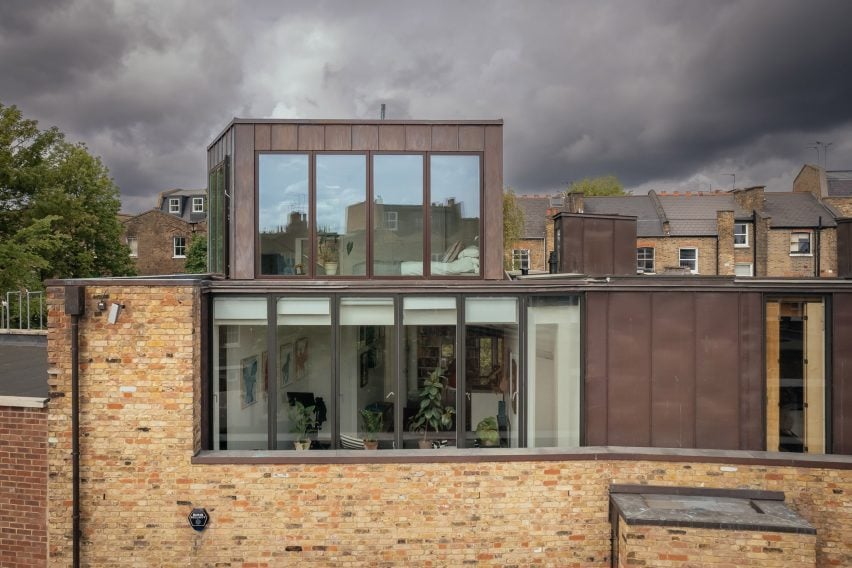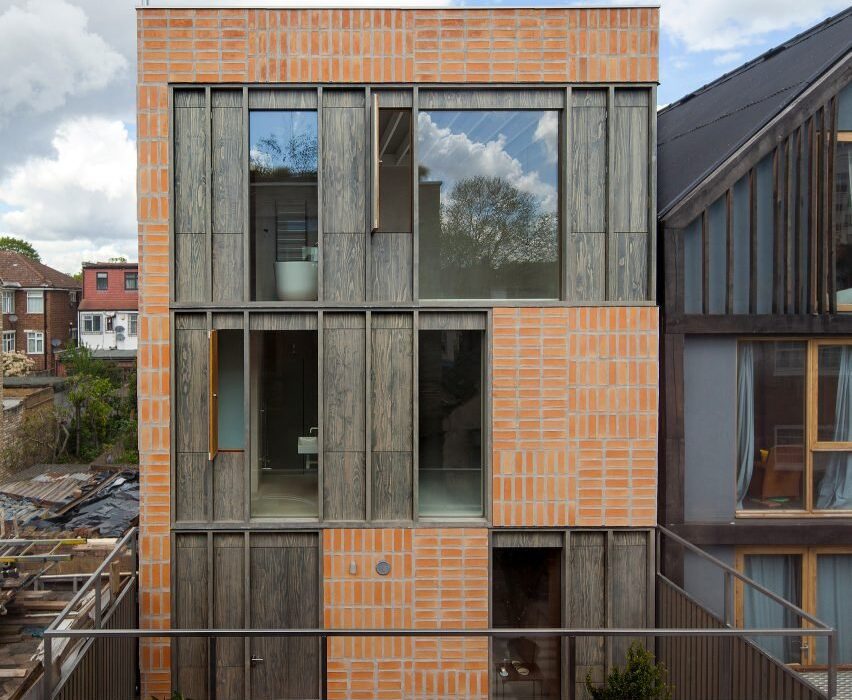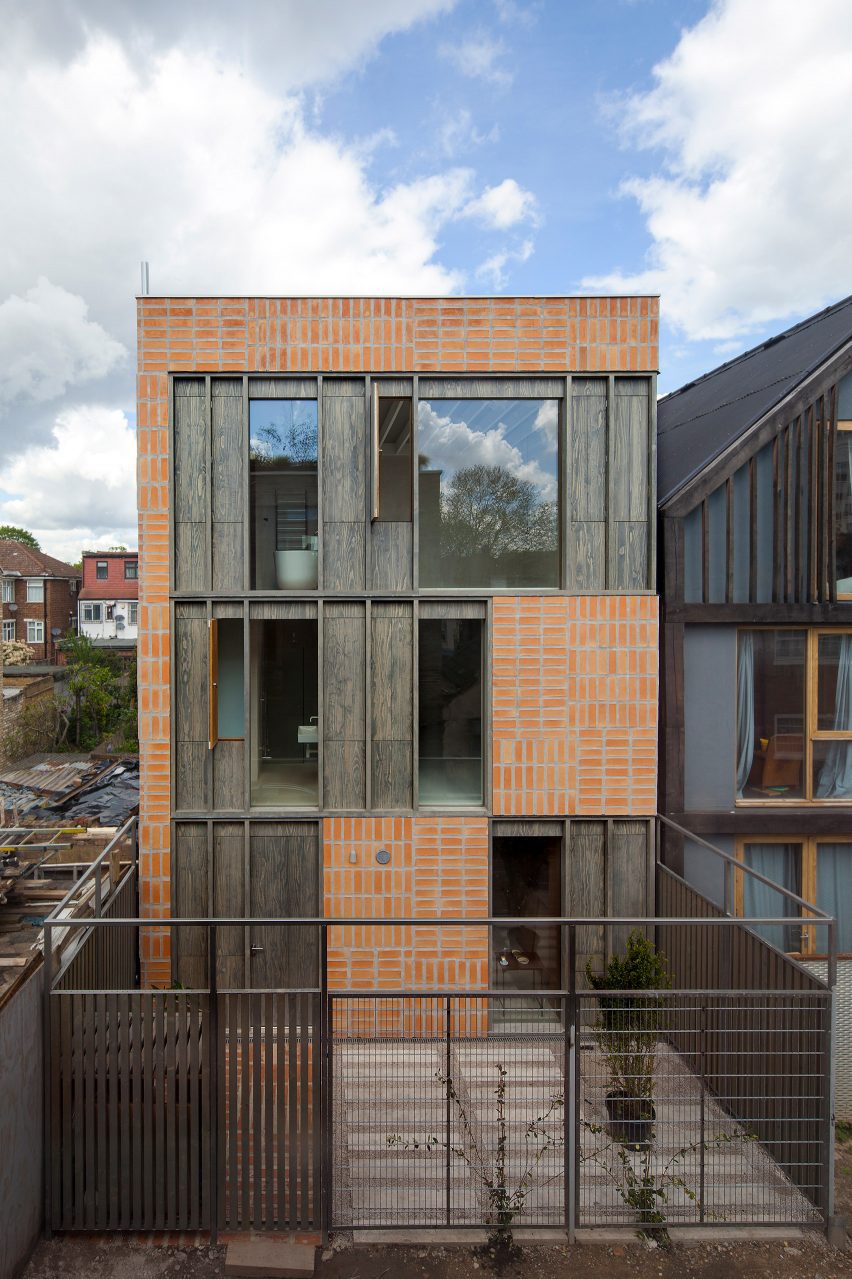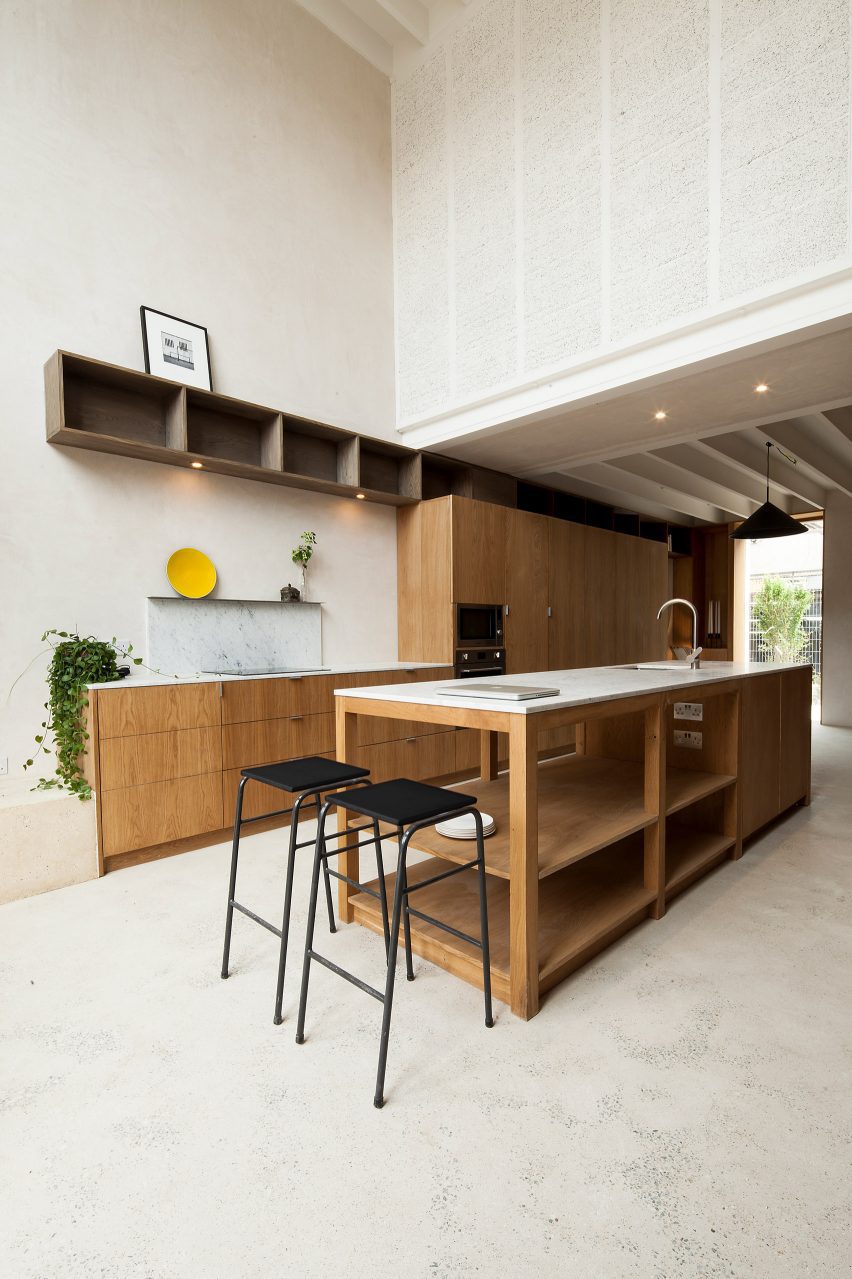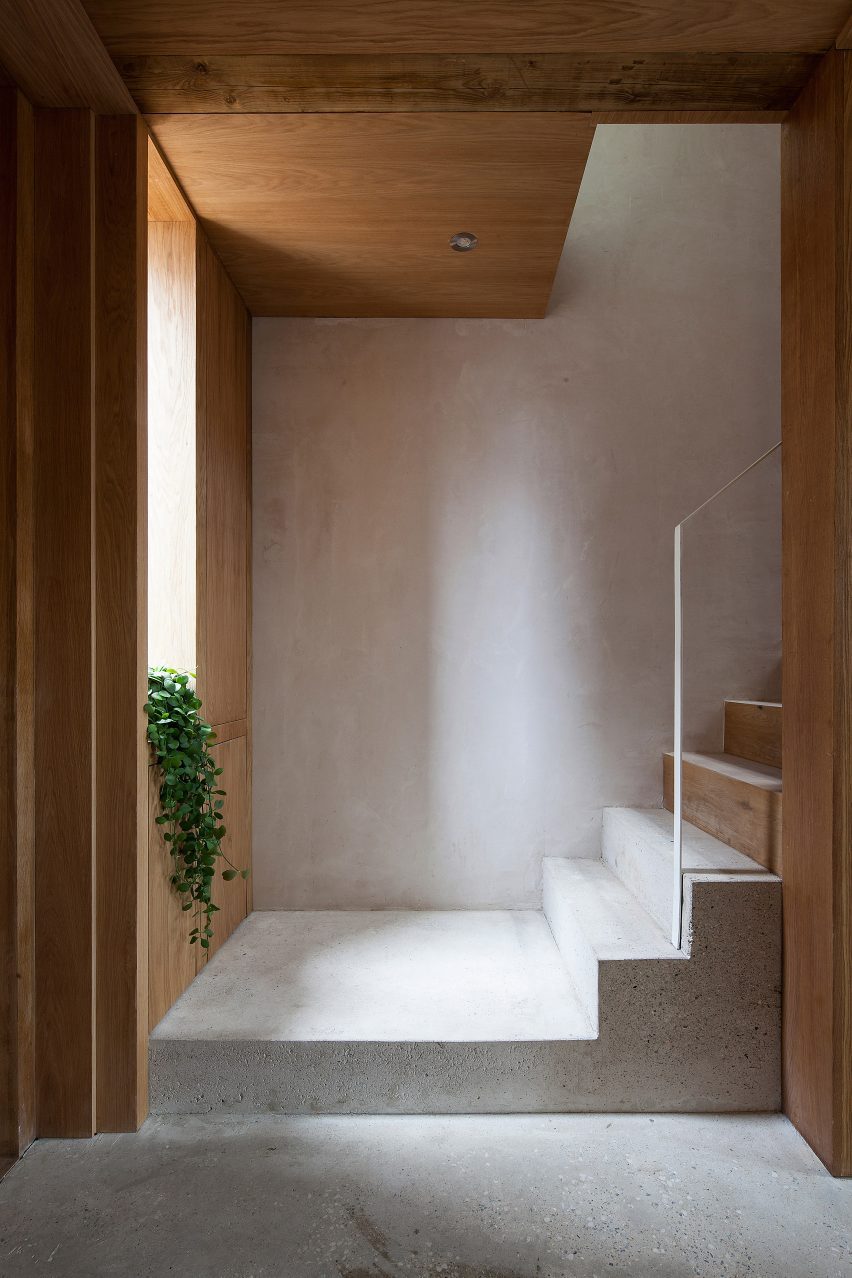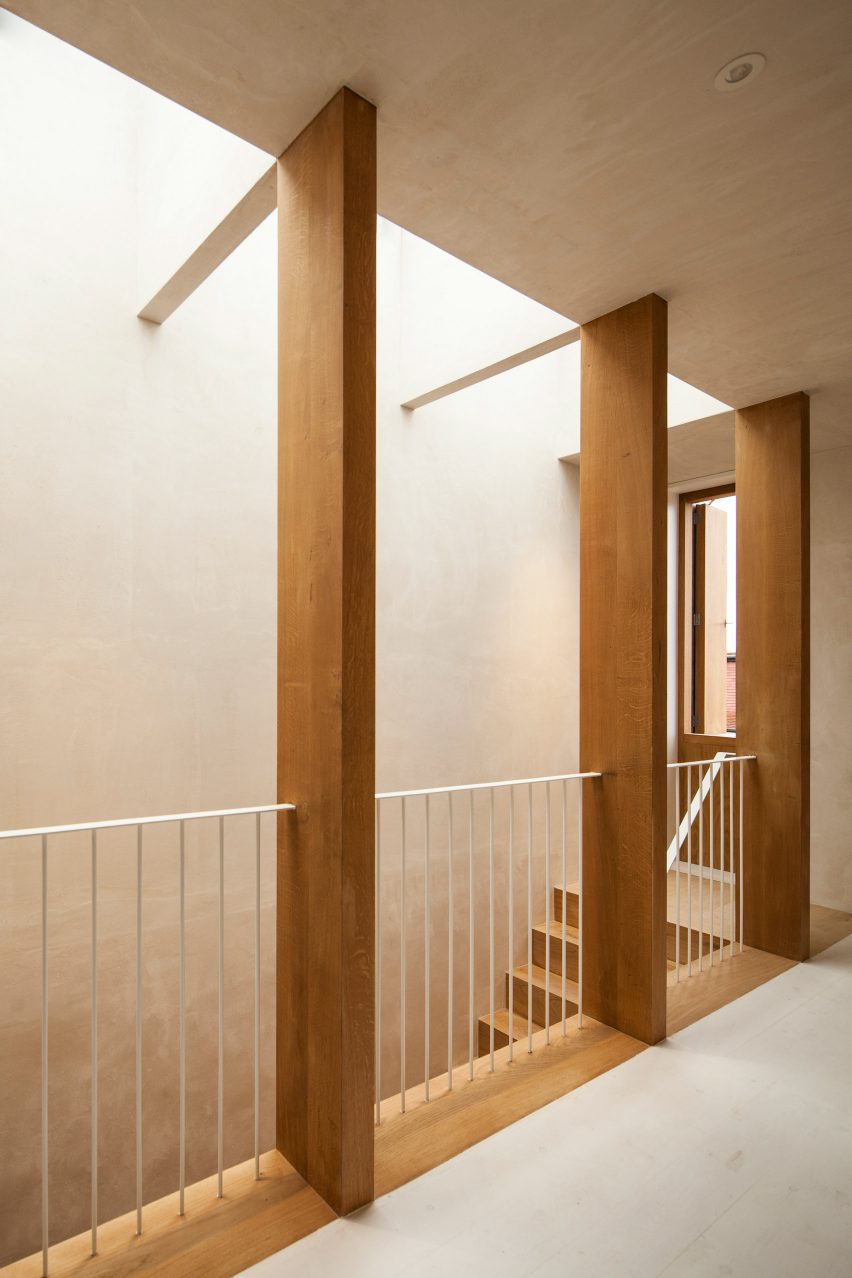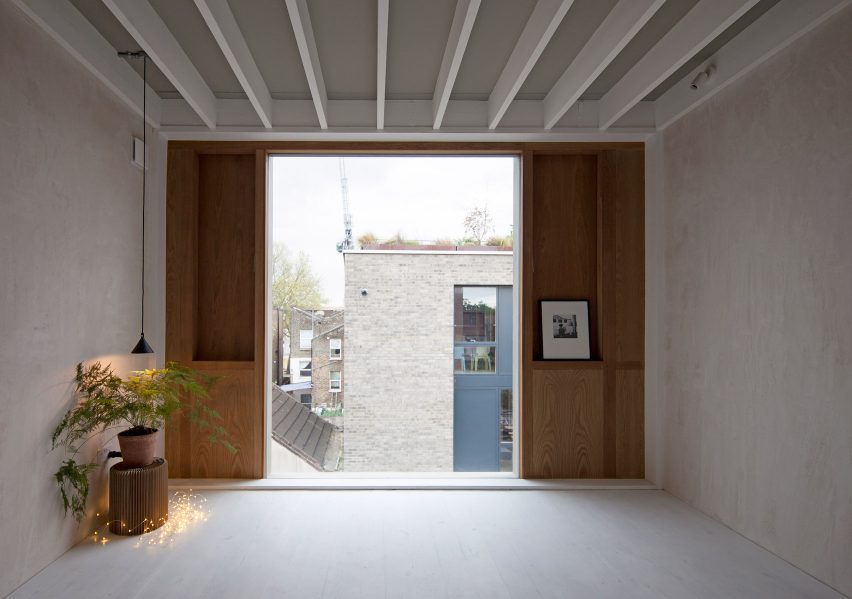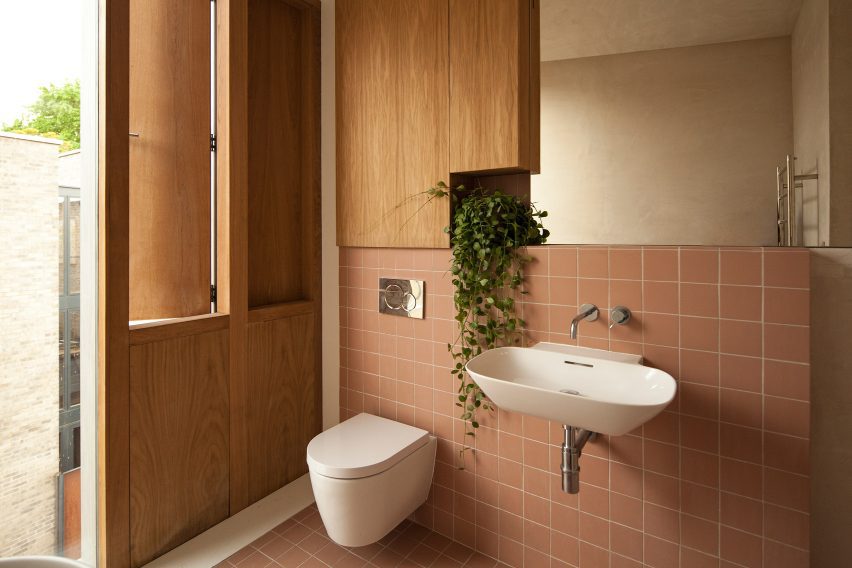Whittaker Parsons crowns London mews house with “bolthole” extension
Using a combination of copper, larch and structural insulated panels, architecture firm Whittaker Parsons has added an additional storey to a contemporary mews house in Stoke Newington to house a bedroom suite.
Originally built in 2005, the property belongs to a couple with two older children, who have lived here for the last decade.
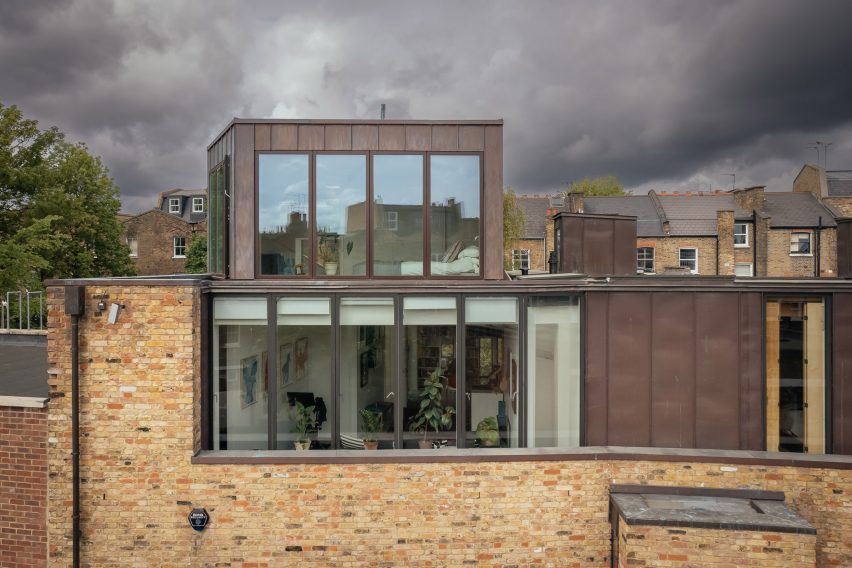
The family asked Whittaker Parsons to provide more space with the addition of a loft, as well as to revamp the lower floors including the studio on the second floor, which was reconfigured to create a well-proportioned workspace complete with its own library.
Daylight floods the new third storey, bouncing off lime-plastered walls while carefully positioned windows provide views of tree canopies and across rear gardens from window seats and the bespoke bed.
“We set out to design a beautiful, healthy, serene retreat, in which the homeowners could immerse themselves in the beauty of natural materials, a bolthole in the middle of north London,” Whittaker Parsons told Dezeen.
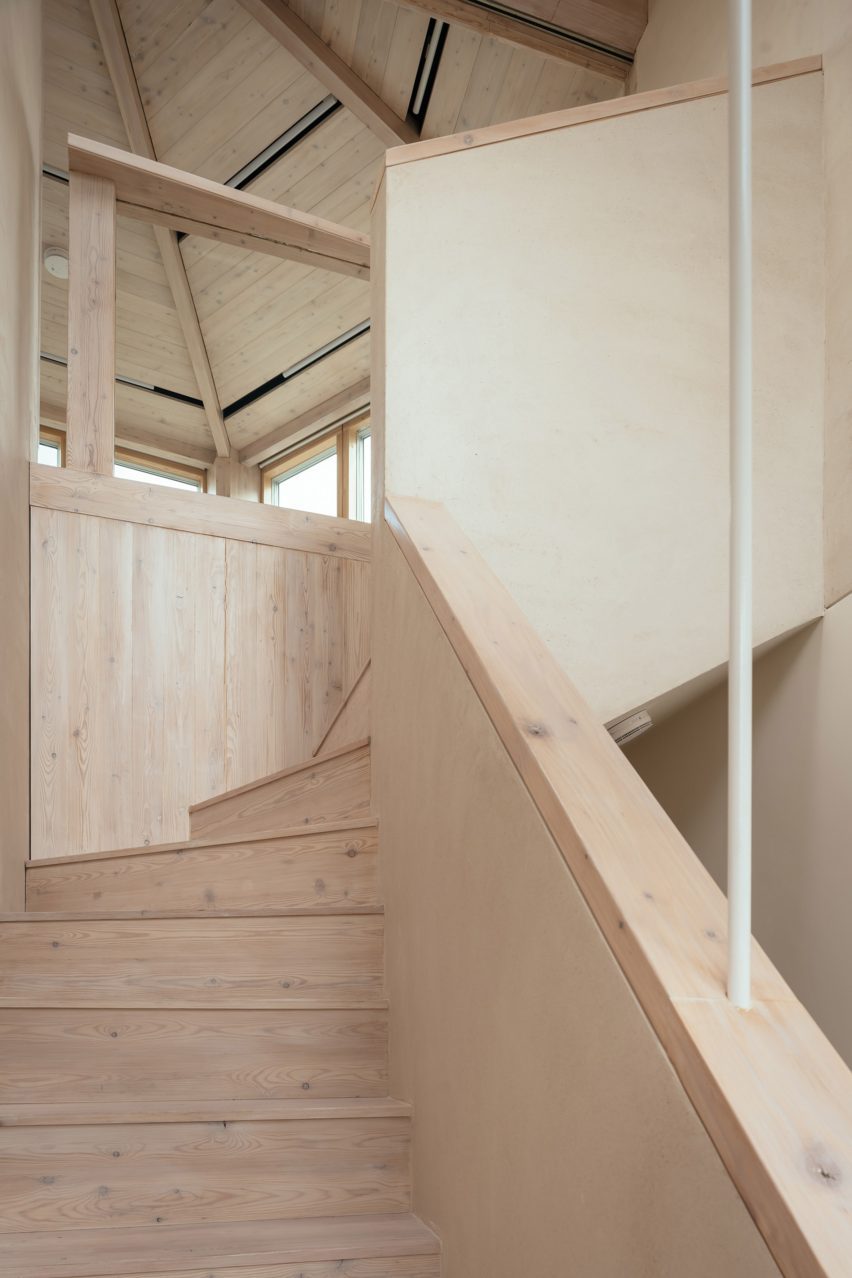
With efficiency and quality in mind, the studio used prefabricated structural insulated panels (SIPs) to construct the additional storey, with the aim of minimising waste and saving time.
“Compared to standard timber construction, it is simpler to control the quality of onsite workmanship and achieve a more robust, air-tight building envelope,” the team explained.
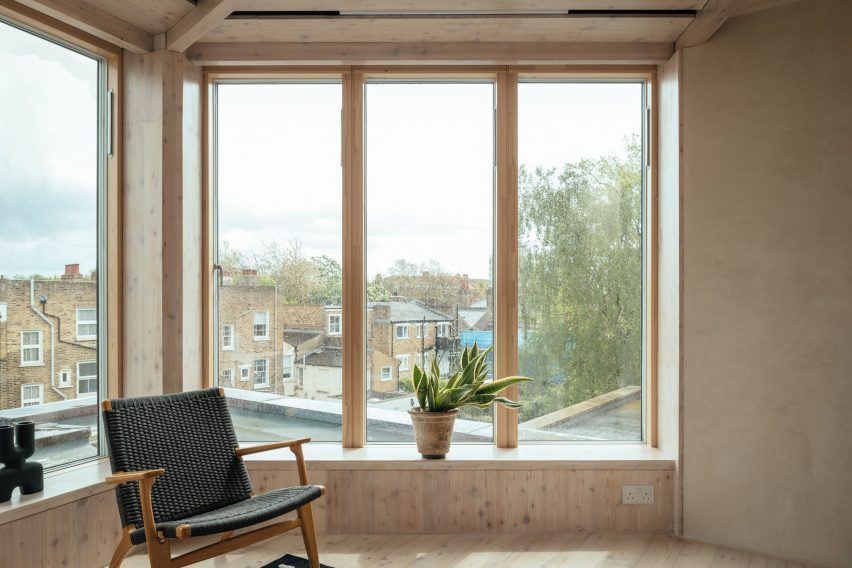
Externally, the extension is set back from the street elevation and finished in materials that mirror the surrounding architecture, including black-stained timber cladding, brick slips and patinated copper to tie in with the copper facade on the second floor below.
Internally, the triangular arrangement of the larch beams was developed to work with the load path of the existing building and the irregular form of the loft.
“The intention was to make visible and celebrate the structural effort that went into creating this new space,” Whittaker Parsons explained.
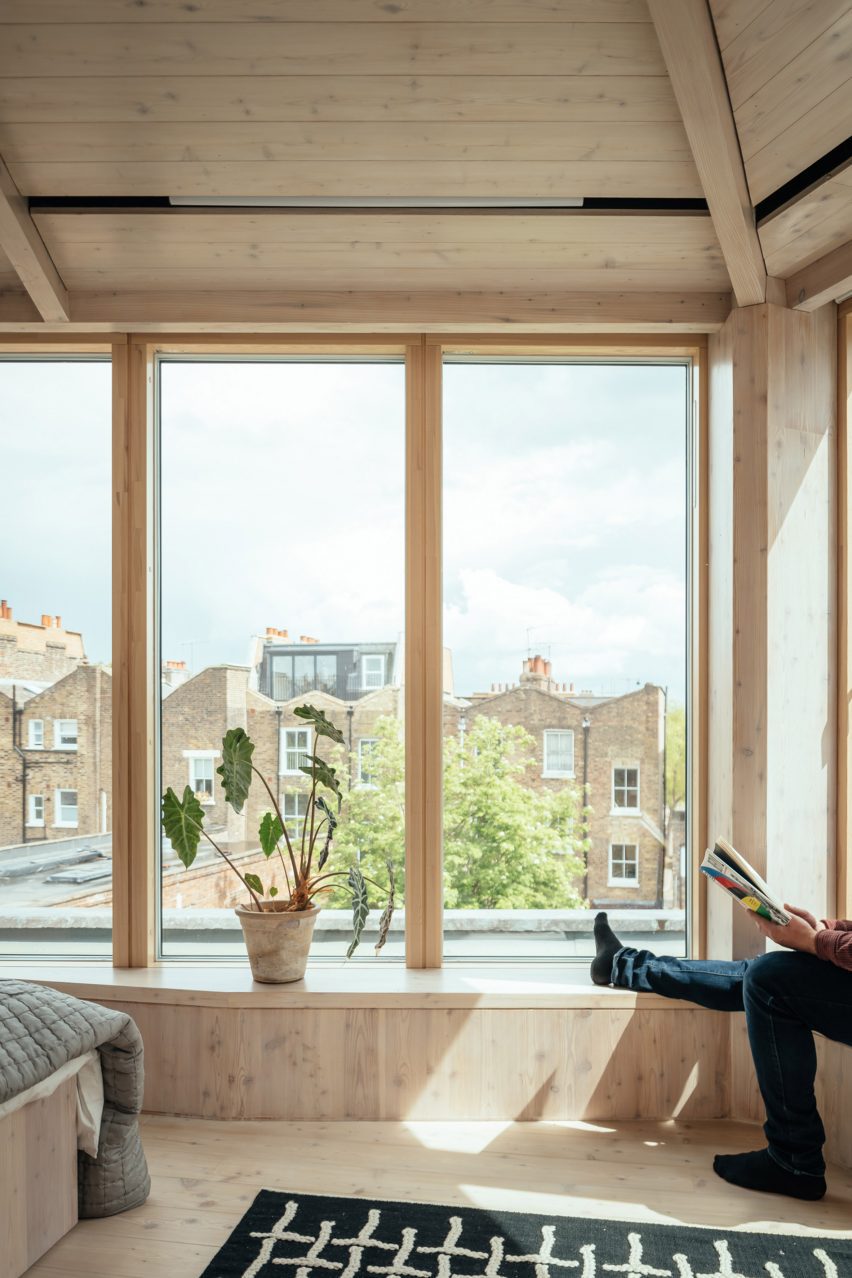
The practice created a tranquil master bedroom with a larch-clad and lime-rendered interior, bespoke larch bed frame and walk-in wardrobe made from low-formaldehyde furniture board.
As the unsealed lime plaster wall finish cures, the lime will absorb almost as much carbon as was emitted in its production, the studio claims.
“Lime render is a calming tactile material, characterful and soft,” said Whittaker Parsons. “It is a low-carbon alternative to gypsum plaster. It’s also a hygroscopic material, so it naturally moderates the moisture level in the bedroom.”
Used alongside the render, white oiled larch panelling spans the spaces between the exposed larch beams, improving acoustic absorption.
“Often in bedrooms, the ceiling is the most important yet neglected surface,” the studio said. “The larch adds a sense of warmth, calm, and character to the space, creating an articulated ceiling at the top of the house – almost a reward for climbing all those stairs.”
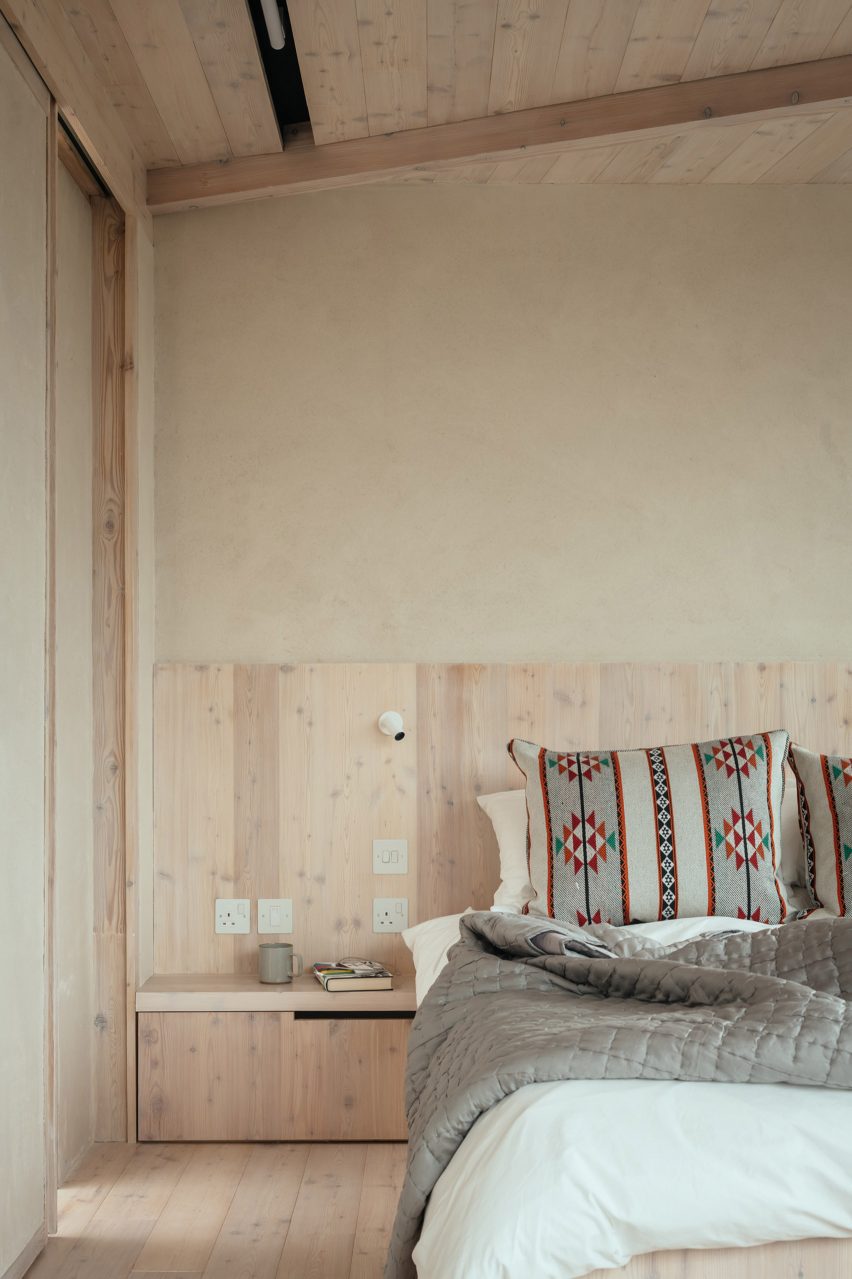
In the adjoining skylit shower room, fluted travertine tiles line the walls, enveloping the shower area and complementing the travertine floor tiles.
“The roof light to the shower oversails the fluted travertine tiles, creating the impression that one is showering outside under the sky,” said Whittaker Parsons.
The basin, splashback and vanity unit are formed from unsealed Calacatta Rosato marble, which according to the studio provides a lower-carbon alternative to fired tiles.
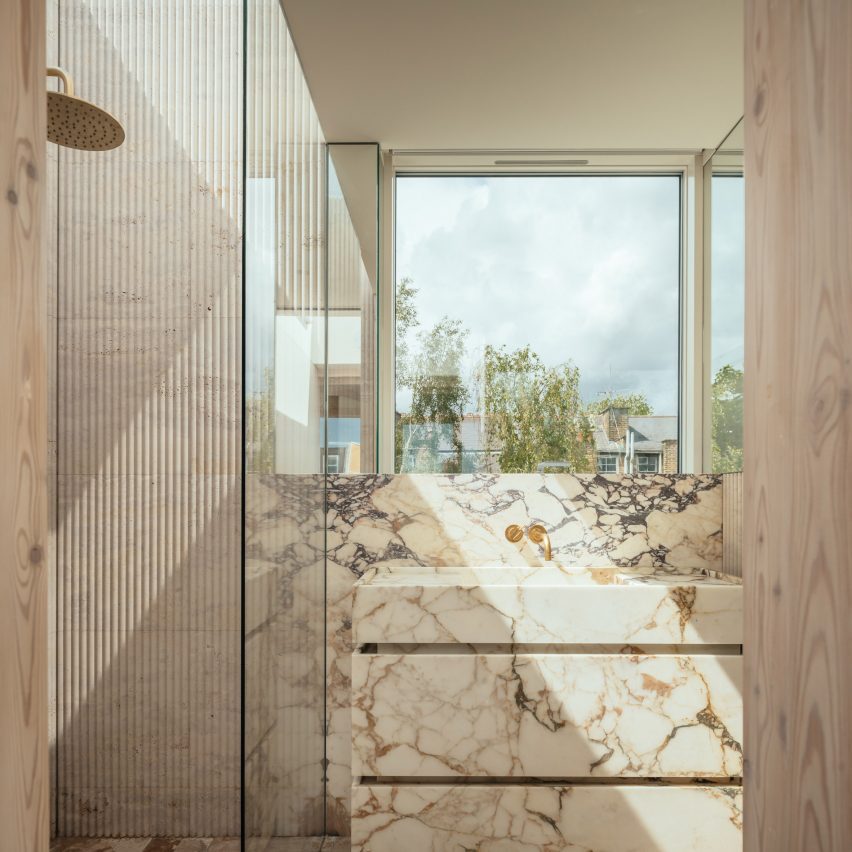
Overall, Whittaker Parsons says the project is “exceptionally low-carbon”, with the bulk of its embodied emissions coming from the triple glazing, thermal insulation and a single steel beam used to create the opening for the staircase.
Founded by Matthew Whittaker and Camilla Parsons in 2015, Whittaker Parsons has completed a number of projects in the British capital including The Naked House, which was longlisted for sustainable interior of the year at the 2021 Dezeen Awards.
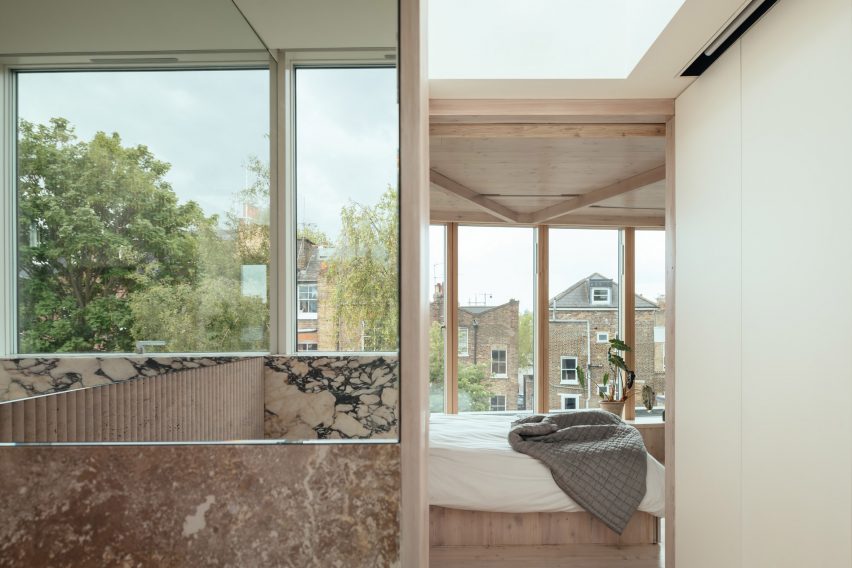
Other sustainably-minded extensions in London include Low Energy House in Muswell Hill, designed by local studio Architecture for London founder for its founder Ben Ridley.
The photography is by Jim Stephenson.

